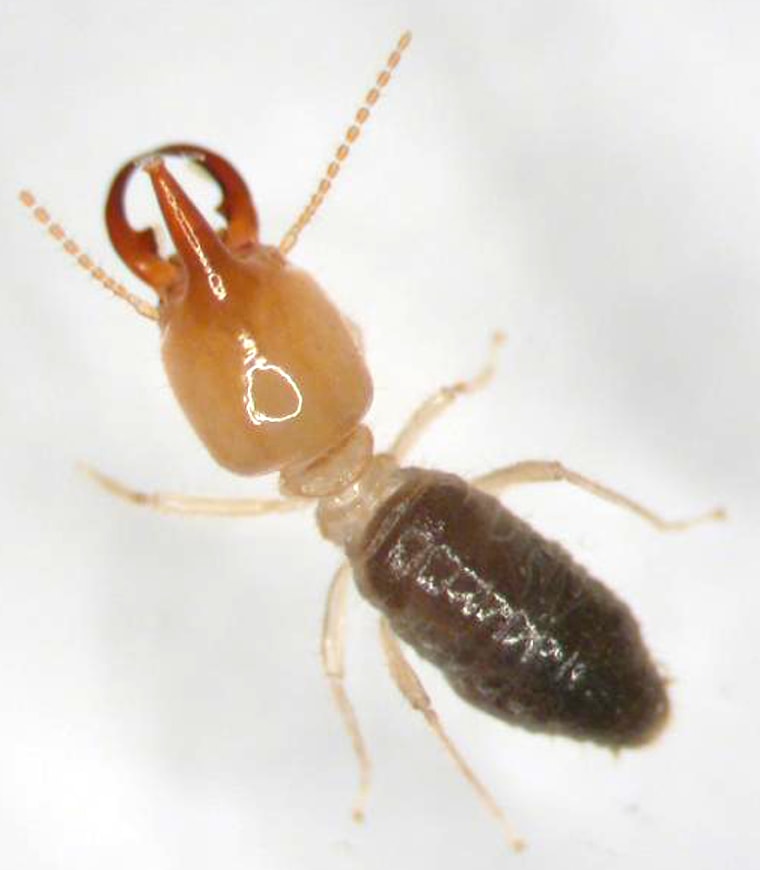Scientists looking for new enzymes to boost biofuel production and help America kick its addiction to imported oil say they have found hundreds of prospects in the unlikeliest of places: bug guts.
That's just one of the places where researchers are looking for ways to produce alternative fuels more efficiently and less expensively. Over the next decade or so, billions of dollars are expected to go into the development of new alternative-fuel technologies — a wave of research initiatives that some compare to World War II's Manhattan Project to develop the atomic bomb.
"I think there's a Manhattan Project going on," said Mel Simon, a research at the California Institute of Technology and the San Diego-based biotech company Diversa. "We may not just have noticed it."
Experts surveyed their progress on alternative-fuel development on Friday here at the annual meeting of the American Association for the Advancement of Science. Unlike, say, commercial nuclear fusion — which is still decades down the road — the researchers said biofuels should make an impact on the energy economy within the next decade.
Nobel laureate Steven Chu, director of the Lawrence Berkeley National Laboratory, said the need for alternatives to gasoline has become "very pressing" as the price of oil has risen.
"Currently, transportation fuel is the most valuable form of energy we have," Chu said. The economics is such that powering automobiles with gasoline is now four times as expensive as powering them with plug-in electricity, he said.
As part of its initiative to reduce gasoline consumption by 20 percent over the next decade, the White House is asking for $179 million over the next year for biofuel research. Private investment is just as substantial: This month, the energy firm BP announced a $500 million, 10-year initiative to support biofuel development.
From corn to cellulose
For now, the focus is on producing ethanol from domestic corn for use in gasoline blends. This week, the Agriculture Department projected that the demand for ethanol would lead to a 40 percent increase in the nation's corn crop by 2016.
However, experts generally agree that corn-based ethanol won't make much of a dent in fuel demand. Some studies have indicated that the costs of producing such ethanol exceed the value of the fuel produced, and other analysts are concerned that rising corn prices could eventually lead to a food vs. fuel crisis.
That's why scientists are interested in ways to make the conversion process more efficient, with cellulose rather than corn serving as the raw material for ethanol. Theoretically, wood waste, crop waste (such as cornstalks) and grasses could be turned into fuel — significantly driving down the cost.
In one experiment, Illinois researchers converted miscanthus grass into ethanol at a rate of 2,500 gallons per acre, said Christopher Somerville, a researcher at the Carnegie Institution and Stanford University.
If the technology could be commercialized, Chu said, that yield would be "2.5 times higher than sugar cane," which is the crop of choice for Brazil's booming ethanol industry. Theoretically, cellulose-based ethanol could replace at least one-third of the gasoline used in the United States today, Chu said.
However, the processes for converting cellulose into ethanol are still relatively costly and inefficient. The cell walls of cellulose are constructed in such a way to discourage digestion by insects — or, for that matter, by the equipment used in ethanol distilleries.
That's where the termite guts come in handy.
Going for the gut
Researchers such as Caltech's Simon have been analyzing microbes extracted from the termite's digestive system, looking for the enzymes that enable the bugs to turn wood cellulose into sugars. So far, hundreds of promising enzymes, including glycohydrolases and cellulases, have been found.
The project, which is being conducted by Diversa and Caltech as well as the U.S. Department of Energy's Joint Genome Institute and Costa Rica's National Biodiversity Institute, has turned up challenges as well, Simon said.
"The problem with biology is that it's slow, so it takes an awful lot of termites an awful lot of time to digest a 2-by-4," he said. "There are bacteria that make essentially fuel oil, but the process is very inefficient."
The goal isn't to enlist the termites or even the bacteria per se, but to unravel the chemical pathways that the microbes use — then adapt those biological processes for more efficient artificial techniques.
"In general, microbes play only one part in the process," Simon said. "Nobody can think of a superbug that can eat your table."
Brave new world
Another avenue for research is breeding cellulosic plants that are more amenable to the conversion process. That was part of the impetus behind the recent sequencing of the poplar genome — the first tree to have its genetic code fully analyzed. The genes of trees or woody plants could conceivably be tweaked to make the sugars within the cellulose easier to get at.
However, Somerville cautioned that this type of brave new world was still far off: "It's impossible that any genetically modified plants would be available before 15 years from now."
By that time, he expects the biofuels industry to be running at full speed. "Within 10 to 12 years we'll have a very substantial cellulosic ethanol industry," he said. From his point of view, the big problem may not be producing the ethanol, but having enough cars that are capable of using high-ethanol fuel blends. Currently, less than 3 percent of the nation's 250 million highway vehicles are capable of using an 85 percent ethanol blend.
Even if cellulosic ethanol production increases on a pace to replace a third of America's gasoline consumption, as the Department of Energy hopes, the dearth of ethanol-friendly vehicles could pose a "large infrastructure problem," Somerville said.
"The fleet needs to turn over," he said.
